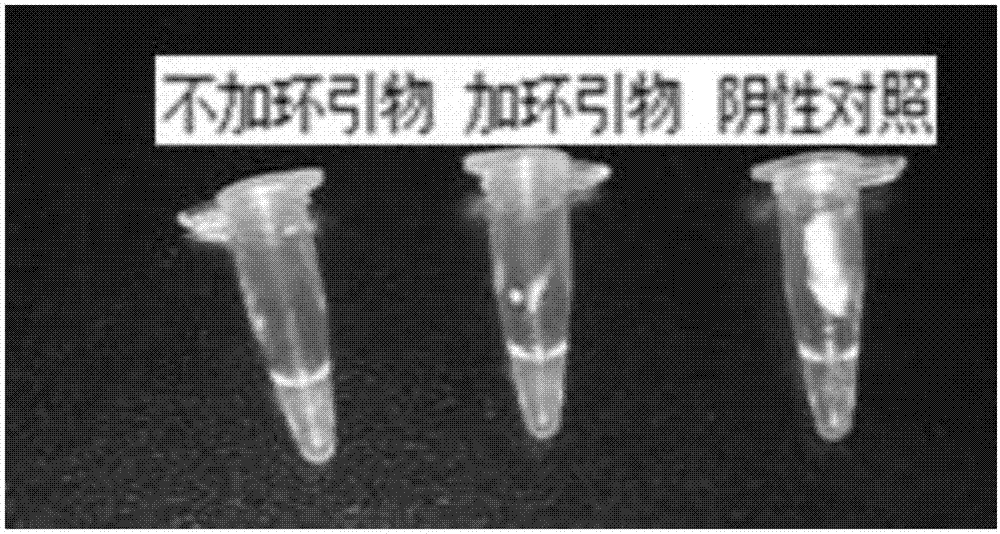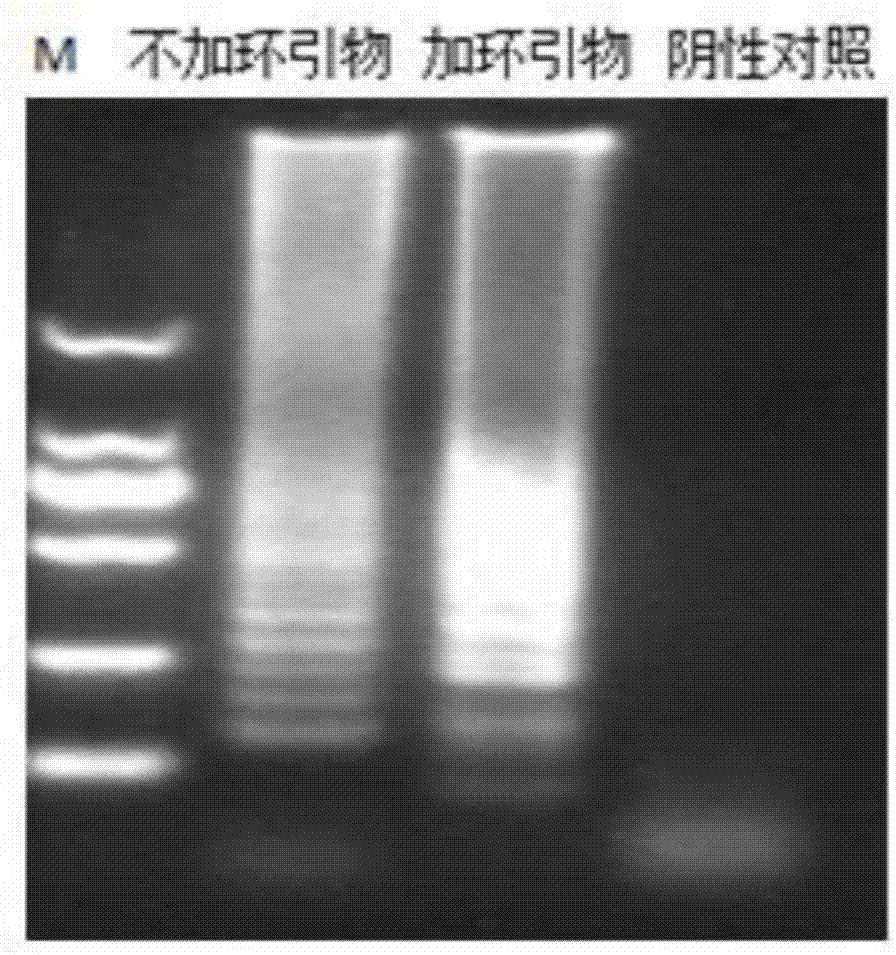Primer group for detecting escherichia coli O157 in feed and detection method of primer group
A technology for detection of Escherichia coli and its detection method, which is applied in the detection of Escherichia coli O157 in feed and its detection field, which can solve the problems of low sensitivity and achieve the effect of improving sensitivity and detection sensitivity
- Summary
- Abstract
- Description
- Claims
- Application Information
AI Technical Summary
Problems solved by technology
Method used
Image
Examples
Embodiment 1
[0068] Escherichia coli O157:H7 detection in feed, the detection process is as follows Figure 10 As shown, specifically:
[0069] Escherichia coli O157:H7 cultivation: First, mix 500g of concentrated feed confirmed to be free of Escherichia coli O157:H7 with 500g of pig bone meal. Weigh 8 samples of 25g and artificially introduce Escherichia coli O157:H7, the introduction amount is 2CFU / 25g, 4CFU / 25g, 6CFU / 25g, 8CFU / 25g, 10CFU / 25g, 12CFU / 25g, 14CFU / 25g, and then introduce into the large intestine The samples of Bacillus O157:H7 were added into sterile homogeneous bags filled with 225mL modified EC broth (purchased from Guangdong Huankai), and placed in a constant temperature incubator at 36°C±1°C for 18h to obtain the enrichment solution;
[0070] DNA extraction: Take 7000g of the aforementioned 1mL enrichment solution and centrifuge it for 1min, remove the supernatant, then wash the precipitate twice with double-distilled water, suspend the precipitate with 100μL double-dis...
Embodiment 2
[0075] Cultivate Escherichia coli O157:H7 with reference to the steps in Example 1 to obtain the enrichment solution, and perform ordinary PCR amplification test according to the following method.
[0076] Ordinary PCR amplification reaction: Add 10 μL of 5×taq DNA polymerase buffer, 1 μL of dNTP (deoxyribonucleoside triphosphate) mixture, MgCl 2 6 μL, 2 μL of internal primer (FIP), 2 μL of internal primer (BIP), 2 μL of external primer (F3), 2 μL of external primer (B3), 2 μL of template DNA, 0.25 μL of taq DNA polymerase, and add the balance to 50 μL with distilled water to obtain the reaction system. Place the PCR tube in the PCR machine and perform the reaction according to the following conditions: denature at 95°C for 2 minutes; then 95°C for 30s; 57°C for 30s; 72°C for 30s, and so on for 35 cycles; then extend at 72°C for 5 minutes. After the reaction, observe the results by 2% agarose gel electrophoresis, the results are shown in Figure 11 , the product should be 2...
Embodiment 3-6
[0079] Referring to Example 1, detection of Escherichia coli O157:H7 in feed. Wherein, the concentration of each component of the loop-mediated isothermal amplification reaction system is selected according to Table 4;
[0080] Each component concentration of reaction system in table 4 embodiment 3-6
[0081]
PUM
| Property | Measurement | Unit |
|---|---|---|
| Sensitivity | aaaaa | aaaaa |
Abstract
Description
Claims
Application Information
 Login to View More
Login to View More - R&D
- Intellectual Property
- Life Sciences
- Materials
- Tech Scout
- Unparalleled Data Quality
- Higher Quality Content
- 60% Fewer Hallucinations
Browse by: Latest US Patents, China's latest patents, Technical Efficacy Thesaurus, Application Domain, Technology Topic, Popular Technical Reports.
© 2025 PatSnap. All rights reserved.Legal|Privacy policy|Modern Slavery Act Transparency Statement|Sitemap|About US| Contact US: help@patsnap.com



